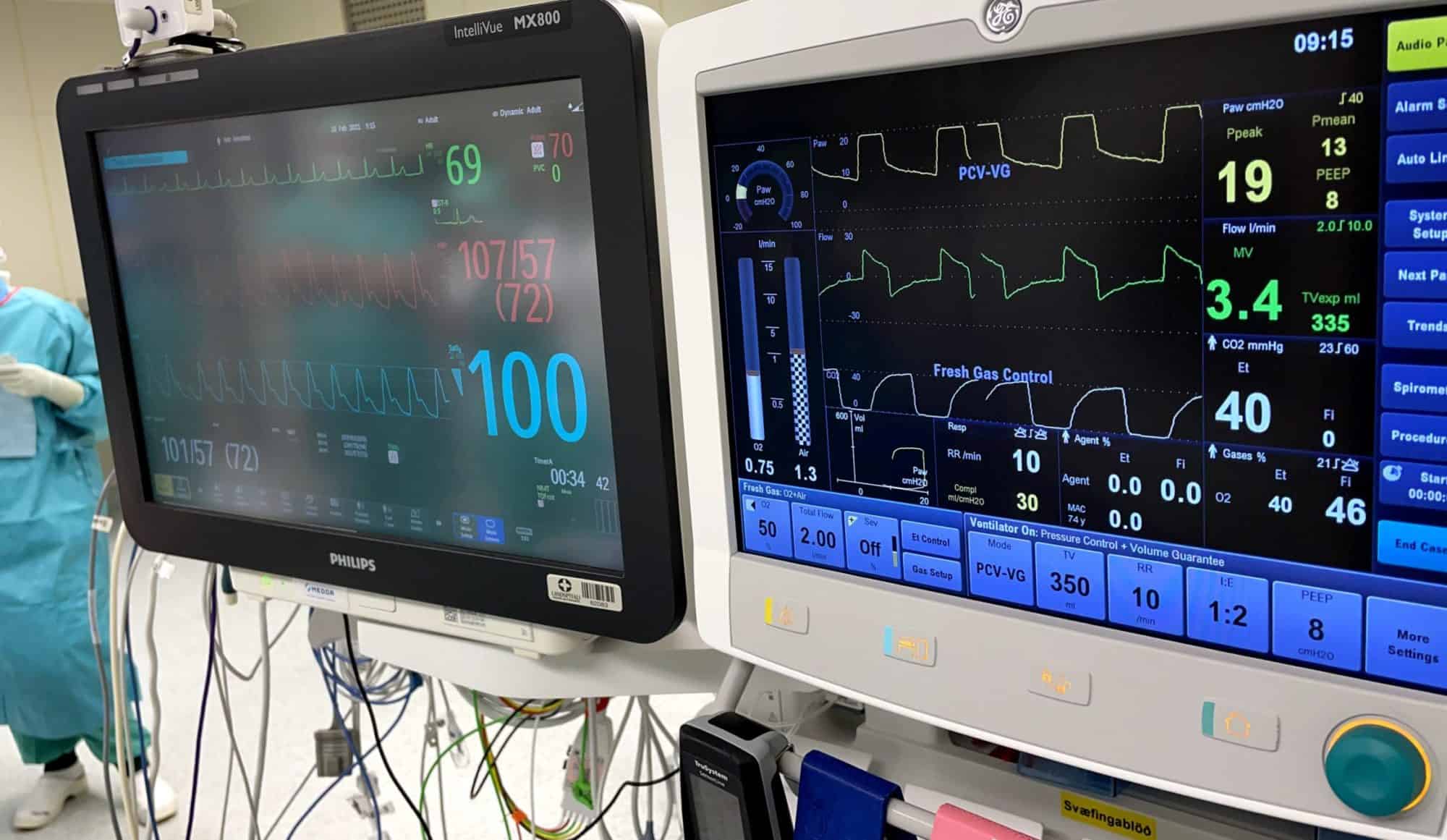Core Learning Outcomes
* To manage the recovery of patients from general anaesthesia
* To describe the organisation and requirements of a safe recovery room
* To identify and manage common postoperative complications in patients with a variety of co-morbidities
* To manage postoperative pain and nausea and vomiting
* To manage postoperative fluid therapy
* Safely manage emergence from anaesthesia and extubation
* Shows awareness of common immediate postoperative complications and how to manage them
* Prescribes appropriate postoperative fluid and analgesic regimes
* Assess and treats PONV
Knowledge
- PO_BK_01 Lists the equipment required in the recovery unit
- PO_BK_02 Lists the types of monitoring and the appropriate frequency of observations required for patients having undergone different types of surgery
- PO_BK_03 Describes the care of an unconscious patient in the recovery room, including safe positioning
- PO_BK_04 In respect of restoring spontaneous respiration and maintaining the airway at the end of surgery:
- * Explains how to remove the tracheal tube and describes the associated problems and complications
- * Recalls/describes how to manage laryngospasm at extubation
- * Recalls/lists the reasons why the patient may not breathe adequately at the end of surgery
- * Recalls/identifies how to distinguish between the possible causes of apnoea
- * Lists the possible causes of postoperative cyanosis
- * Describes how to evaluate neuro-muscular block with the nerve stimulator
- PO_BK_05 With respect to oxygen therapy:
- * Lists its indications
- * Lists the techniques for oxygen therapy and describes the performance characteristics of available devices
- * Recalls/explains the causes and management of stridor
- PO_BK_06 Outlines/recalls the principles of appropriate postoperative fluid regimes including volumes, types of fluids and monitoring offluid balance including indications for urethral catheterisation
- PO_BK_07 In respect of postoperative pain:
- * Describes how to assess the severity of acute pain
- * Describes the ‘analgesic ladder’
- * Discusses how emotions contribute to pain
- * Identifies appropriate postoperative analgesic regimes including types of drugs and doses
- * Explains how to manage ‘rescue analgesia’ for the patient with severe pain
- * Lists the complications of analgesic drugs
- PO_BK_08 In respect of PONV:
- * Recognises the impact of PONV
- * Lists the factors that predispose to PONV
- * Describes the basic pharmacology of anti-emetic drugs
- * Describes appropriate regimes for prevention and treatment of PONV
- PO_BK_09 Describes the possible causes and management of postoperative confusion
- PO_BK_10 Describes the causes and management of postoperative hypotension and hypertension
- PO_BK_11 Identifies premorbid disease states that may require patients to have higher (level 2 or 3) levels of care in the postoperativeperiod.
- PO_BK_12 Describes the prevention, diagnosis and management of postoperative pulmonary atelectasis
- PO_BK_13 Lists the appropriate discharge criteria for patients leaving the recovery room and day stay patients
- PO_BK_14 Explains the importance of following up patients in the ward after surgery
Skills
- PO_BS_01 Performs safe tracheal extubation
- PO_BS_02 Evaluates neuromuscular blockade using a nerve stimulator
- PO_BS_03 Transfers an unconscious patient from the operating theatre to the recovery room
- PO_BS_04 Turns a patient into the recovery position
- PO_BS_05 Makes a clear handover to recovery staff of perioperative management and the postoperative plan
- PO_BS_06 Prescribes appropriate postoperative fluid regimes
- PO_BS_07 Assesses postoperative pain and prescribes appropriate postoperative analgesia
- PO_BS_08 Manages postoperative nausea and vomiting
- PO_BS_09 Assesses postoperative confusion
- PO_BS_10 Recognises when discharge criteria have been met for patients going home or to the ward
- PO_BS_11Undertakes follow-up visits to patients after surgery on the ward
